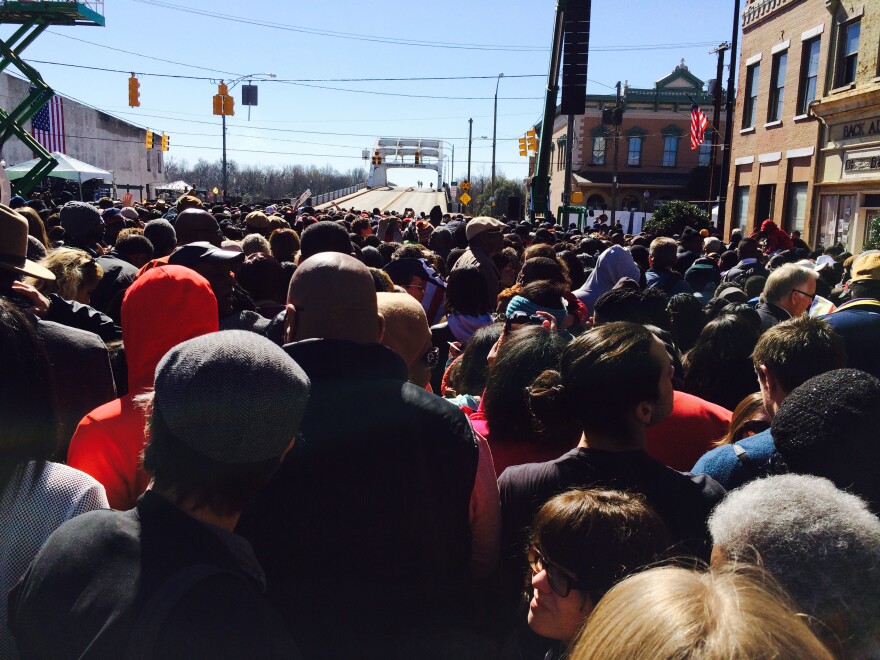Our next installment of the 52 Strong: USU Civil Rights Pilgrimage series takes us to Selma, Ala. for the fiftieth anniversary of bloody Sunday. USU Professor Jason Gilmore brings us the history of the now infamous march, with research help by Austin White of Bellevue College.
We were standing on hallowed ground. In the 1960s, Selma, Ala. was known to leading civil rights organizations as a place where civil rights work was simply too difficult. According to Dr. Bernard Lafayette, director of the Selma voter registration campaign starting in 1962, it was a place ‘where white people were too mean and black people were too scared.’ In other words, don’t go to Selma.
After three years of organizing by Lafayette and local community leaders, Selma was transformed from a place that had terrified voter registration organizers into the location of the next major staging ground of the ongoing civil rights movement.
In early 1965, Dr. King and the Southern Christian Leadership Conference (SCLC), partnered with SNCC, the Student Nonviolent Coordinating Committee to combat the inequities in Selma through voter registration and civil disobedience.
Two months into the campaign, organizers decided to march 54 miles to Montgomery, the state’s capitol, in protest of the death of a local civil rights foot soldier, Jimmie Lee Jackson. Upon crossing the Edmund Pettus Bridge, named after a former Confederate general and grand dragon of the Alabama KKK, the marchers were met by Alabama state troopers armed with billy clubs and tear gas. The troopers quickly advanced on the marchers, severely beating them all the way back to Brown Chapel, the starting point of the march. That day, March 7, 1965, would go down in history as bloody Sunday.
Two weeks later they picked up where they left off, this time with full federal protection, and headed to Montgomery. The march garnered national and international attention and has been credited as inspiring the passage of the Voting Rights Act of 1965.
The Utah State University crew, along with our fellow pilgrims from Bellevue College and the University of Washington, arrived in Selma on Friday to commemorate the fiftieth anniversary of bloody Sunday and the efforts of the civil rights foot soldiers involved in the Selma marches.
One of the highlights of the visit was attending a speech by the nation’s first black president. This was particularly symbolic because Obama’s presidency was made directly possible by the courage that the marchers had on that historic day. Utah State University students Miranda Vance and Adrian Bustamante took to the streets of Selma during and after during and after Barack Obama’s historic speech to find out what Selma means to those who attended.
Emma O’Hare, from Montgomery, Ala.
“In all honesty, my son is growing up here in Ala. As a 12-year-old, he is becoming more and more aware of the civil rights movement going on and today seemed like a good day. He asked to come, and you don’t not do that as a parent. I want to bring up a man that is different than the men that have grown up in this world, and being here and hearing things like this changes all of this.”
Frantz Wilson
“My family and I lived in Montgomery, Ala. at the time of the original march when they had bloody Sunday here. The speech today was really, really meaningful to me simply because, at the time when we were here 50 years ago, there was no such thing as an African-American president. That’s the real main thing that’s really meaningful to me. I was able to see a part of my life when this kind of thing could never have happened.”
You can learn more about the civil rights pilgrimage on Facebook or on Instagram @usucivilrights.



